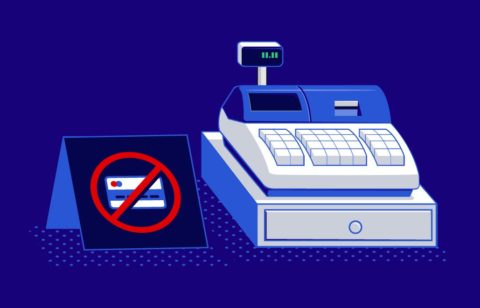People who are having a serious problem with debt have found that one good solution is to consolidate it. The advantages of debt consolidation are that you swap a number of monthly payments for just one. That payment should be much less than the sum of your current monthly bills. Plus, if you have angry debt collectors calling you night and day, this will get rid of them.
What is a zero balance transfer card?
Many people are consolidating their credit card debts by transferring them to what are called zero balance transfer cards. And no, when you transfer to the new card you don’t end up with a zero balance. But you do end up with a zero interest rate for anywhere from 6 to 15 months. Since you won’t be paying any interest during that time, you can use the money that’s freed up to pay down your balance and get out of debt faster.
The best cards for balance transfers
Many banks are now moving their marketing away from balance transfers that require no fees to interest-free purchases. Fortunately, there is still strong competition and the best deal comes from Chase, which offers as many as 15 months with no interest charges on its Slate credit card and no balance transfer fee.
Low interest rate
There are three credit cards where your interest rate will be locked in for as long as you have the debt. For example, PenFed (Pentagon Federal Credit Union) offers a Promise Visa with a 4.99% APR for whatever amount of time you take to pay off the amount you’ve transferred. Simmons First has a variable rate on both purchases and balance transfers that is now at 7.25%. Finally, Barklaycard is continuing to market its credit card Ring to more people on its waiting list. The US division of this UK banking giant is not offering a teaser rate. Instead it has set its adjustable interest rate at an even 8%.
No upfront fees
Simmons, PenFed and Barclaycard are still giving new customers the ability to transfer their balances without paying an upfront fee. However, only Chase still has a balance transfer offer that is fee-free on its Slate credit card. New card customers can lock in 15 months without paying any finance charges and take as many as two months to transfer their balances without paying any charges.
However, almost every other major credit card company has reinstated balance transfer fees for new customers at 3%. Wells Fargo raises its fee to 5% at the end of the card’s teaser period. And US Bank raises it to 4% at the end of this period.
Act fast
If you want to take advantage of one of these balance transfers, you need to act fast. According to one recent survey, most banks have tightened the timelines for their customers to transfer their balances at a discounted rate. The shortest processing times are from US Bank and Chase. Customers transferring to US Bank’s new Flex Perks Select Rewards Visa and its Visa Platinum card have only 30 days to complete the transfer. On the other hand, customers of the Discover Card must complete their transfers before the middle of December. PenFed’s offer expires on 31 December. New Wells Fargo and Capital One customers can transfer their balances until the end of their promotional periods.
The problems
The biggest problem with balance transfers is that they are only for new customers. For example, former customers of banks like Providian and Washington Mutual can’t qualify for the best offers from Chase. Ditto, HSBC and Orchard Bank cardholders who probably won’t earn automatic acceptance for Capital One’s offers now that all three of these live under one roof. Also, you may not qualify for some of these offers if you are not deemed creditworthy.





